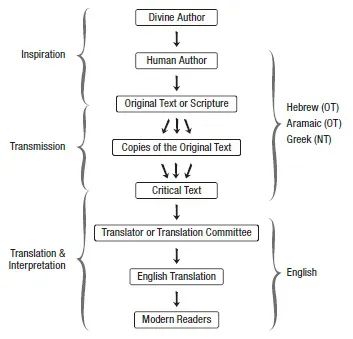
Grasping God's Word, Fourth Edition
A Hands-On Approach to Reading, Interpreting, and Applying the Bible
- 560 pages
- English
- ePUB (mobile friendly)
- Available on iOS & Android
Grasping God's Word, Fourth Edition
A Hands-On Approach to Reading, Interpreting, and Applying the Bible
About this book
A Proven Approach to Help You Interpret and Understand the Bible
Grasping God's Word has proven itself in classrooms across the country as an invaluable help to students who want to learn how to read, interpret, and apply the Bible for themselves. This book will equip you with a five-step Interpretive Journey that will help you make sense of any passage in the Bible. It will also guide you through all the different genres found in the Bible to help you learn the specifics of how to best approach each one.
Filling the gap between approaches that are too simple and others that are too technical, this book starts by equipping readers with general principles of interpretation, then moves on to apply those principles to specific genres and contexts.
Features include:
- Proven in classrooms across the country
- Hands-on exercises to guide students through the interpretation process
- Emphasis on real-life application
- Supplemented by a website for professors providing extensive teaching materials
- Accompanying workbook, video lectures, laminated study guide (sold separately)
This fourth edition includes revised chapters on word studies and Bible translations, updated illustrations, cultural references, bibliography, and assignments. This book is the ideal resource for anyone looking for a step-by-step guide that will teach them how to accurately and faithfully interpret the Bible.
Frequently asked questions
- Essential is ideal for learners and professionals who enjoy exploring a wide range of subjects. Access the Essential Library with 800,000+ trusted titles and best-sellers across business, personal growth, and the humanities. Includes unlimited reading time and Standard Read Aloud voice.
- Complete: Perfect for advanced learners and researchers needing full, unrestricted access. Unlock 1.4M+ books across hundreds of subjects, including academic and specialized titles. The Complete Plan also includes advanced features like Premium Read Aloud and Research Assistant.
Please note we cannot support devices running on iOS 13 and Android 7 or earlier. Learn more about using the app.
Information
PART 1
HOW TO READ
THE BOOK—
Basic Tools
CHAPTER 1
BIBLE TRANSLATIONS
INTRODUCTION
HOW DID WE GET OUR ENGLISH BIBLE?

Out of whose mouth did Scripture come, then? God’s or man’s? [Sounds a lot like Meagan’s question.] The only biblical answer is “both.” Indeed, God spoke through the human authors in such a way that his words were simultaneously their words, and their words were simultaneously his. This is the double authorship of the Bible. Scripture is equally the Word of God and the words of human beings. Better, it is the Word of God through the words of human beings.2
Table of contents
- Cover Page
- Title Page
- Copyright Page
- Dedication
- Contents
- Forewords
- Preface
- Acknowledgments
- Part 1: How to Read the Book—Basic Tools
- Part 2: Contexts—Now and Then
- Part 3: Meaning and Application
- Part 4: The Interpretive Journey—New Testament
- Part 5: The Interpretive Journey—Old Testament
- Appendix 1: Inspiration and Canon
- Appendix 2: Writing an Exegetical Paper
- Appendix 3: Building a Personal Library
- Scripture Index
- Subject Index
- Author Index